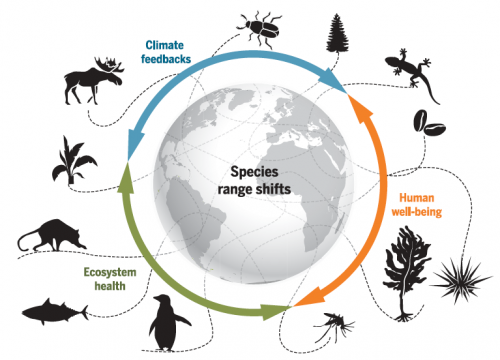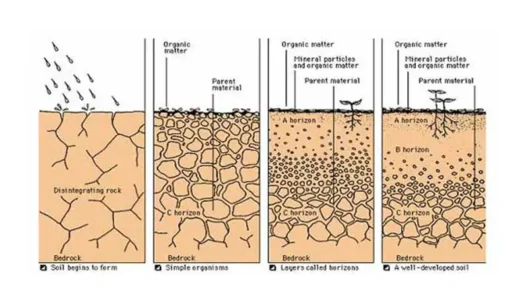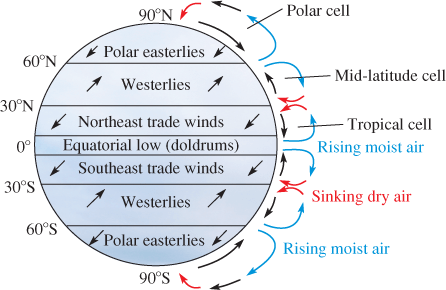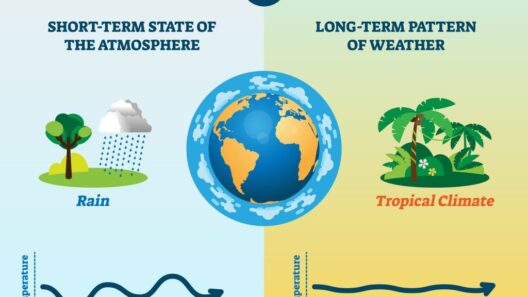As the leaves change color and the seasons shift, one wonders: how are our beloved wildlife adapting to this ever-evolving environment? Climate change looms like a dark cloud, threatening to dismantle the delicate tapestry of life on Earth. As temperatures rise, ecosystems tremble, and species that once thrived in harmony now face unprecedented challenges. In exploring the multifaceted impact of climate change on wildlife, we must ask ourselves: how do different species navigate these turbulent waters, and what does their survival in this shifting world reveal about our own future?
Climate change severally disrupts ecosystems, causing a domino effect that reverberates throughout the natural world. One of the most striking consequences is habitat loss. Rising temperatures lead to decreased ice coverage, particularly in polar regions, while deforestation and desertification are exacerbated by changing weather patterns. Species like the polar bear, reliant on sea ice for hunting seals, find their hunting grounds diminishing. With fewer opportunities to feed, their survival is at risk. In temperate regions, forests are shifting northward as species adapt to warmer temperatures, resulting in unsuitable habitats for those species already residing in these areas. Will the inability to migrate lead to their extinction?
The timing of natural events is also altered by climate change, fundamentally disrupting the synchronization of various biological processes. Migration patterns of birds, for instance, are influenced by climate cues. As spring arrives earlier due to warming temperatures, migratory birds may arrive before their food sources become available. This ecological mismatch can lead to malnutrition or reduced reproductive success. The delicate timing of flowering plants and the animals that depend on them is similarly jeopardized. If plants bloom earlier but pollinators do not adjust accordingly, entire food webs are at risk. How will these mismatches challenge the survival strategies of both flora and fauna?
Climate change is equally responsible for shifts in species distributions. As certain areas of the globe become inhospitable due to increased temperature or shifts in precipitation patterns, many species are forced to relocate. Migration to cooler areas or higher altitudes provides short-term relief. However, suitable habitats may not always exist, and the process of finding new homes poses its own dangers. Fragmented landscapes hinder movement, limiting the ability of wildlife to access vital resources or finding mates. Species that falter in their migration efforts may become isolated, leading to inbreeding and a diminishment of genetic diversity. This reduction in genetic diversity can have dire consequences, diminishing resilience to diseases and environmental changes. Will species that are unable to adapt quickly enough vanish from the planet?
In the aquatic realm, climate change inflicts a different kind of toll. The warming of ocean waters leads to coral bleaching, putting immense stress on marine ecosystems. Corals, which serve as vital habitats for countless marine organisms, are highly sensitive to temperature fluctuations. Increased ocean acidity, another byproduct of climate change, further complicates matters. Many marine species, including shellfish and certain plankton, are unable to thrive in more acidic waters. As these foundational species decline, the entire food web suffers. Will we witness a cascading effect that could alter the ocean’s biodiversity forever?
Additionally, the impacts of climate change are not limited to physical changes in wildlife habitats; behavioral adaptations are also taking place. Many species exhibit changes in breeding season, foraging patterns, and social interactions as they attempt to navigate the new climatic realities. Some animals may become more aggressive in their territorial disputes, vying for increasingly scarce resources. Others may alter their diets, resorting to less preferable options as their traditional food sources dwindle. The ability of wildlife to adapt to these behavioral shifts will be critical for their survival. Can species successfully evolve behaviorally fast enough to keep pace with the changes imposed by climate change?
Another pressing concern is the intensification of extreme weather events, from hurricanes to droughts, driven by the changing climate. Wildlife is not only facing gradual shifts but also sudden, catastrophic events that can decimate populations. For instance, hurricanes can devastate nesting sites and lead to significant loss of life for many species, particularly those that are already endangered. This unpredictable volatility compounds the stress on wildlife, forcing them to adapt not just to gradual changes but to sudden emergencies. How can wildlife recover from such traumatic events, and what strategies might they employ for resilience?
Ultimately, the consequences of climate change extend beyond individual species; entire ecosystems are endangered, with the potential for drastic loss of biodiversity. Ecosystem services, such as pollination, seed dispersal, and nutrient cycling, are at risk as species interact in altered ways. The decline of key species can lead to imbalances that threaten the health of ecosystems and, by extension, humanity’s reliance on these natural systems. The stark reality sets in: our fate is intricately tied to the survival of these wildlife populations. In safeguarding their future, we insulate our own.
As we ponder the ongoing challenges posed by climate change to wildlife, it becomes clear that the narrative is not just about loss. There is a burgeoning movement to restore and protect habitats, promote biodiversity, and implement sustainable practices aimed at mitigating climate change. Individuals, communities, and organizations are beginning to realize the importance of conservation efforts in enabling wildlife to adapt to these changes. The question remains: will humanity rise to the occasion and facilitate a harmonious co-existence with nature? The fate of wildlife in a changing world hinges on our actions today. The time to act is now.






